
PU Prime App
Exclusive deals on mobile



PU Prime App
Exclusive deals on mobile


Hold The Global Markets In Your Hands
Our trading mobile app is compatible with most smart devices. Download the App now and start trading with PU Prime on any device, anytime and anywhere.


Day trading, the art of buying and selling financial instruments within a single trading day, offers fast opportunities and exhilarating market participation. However, navigating the volatile and fast-paced nature of day trading requires a well-defined day trading strategy. In this guide, we will explore the best day trading strategies that can help you maximise your opportunities while you exercise risk management in day trading. Enhance your trading skills with proven day trading strategies for beginners and embark on a successful journey in the financial markets.
Before delving into strategies, it’s important to grasp the fundamentals of day trading. Day traders aim to take advantage of short-term price movements in stocks, currencies, commodities, or other financial instruments. Unlike long-term investors, day traders do not hold positions overnight and aim to capitalise on intraday market fluctuations.
There are several day trading strategies that traders employ to capitalise on short-term price movements. Here are some of the best day trading strategies for beginners:
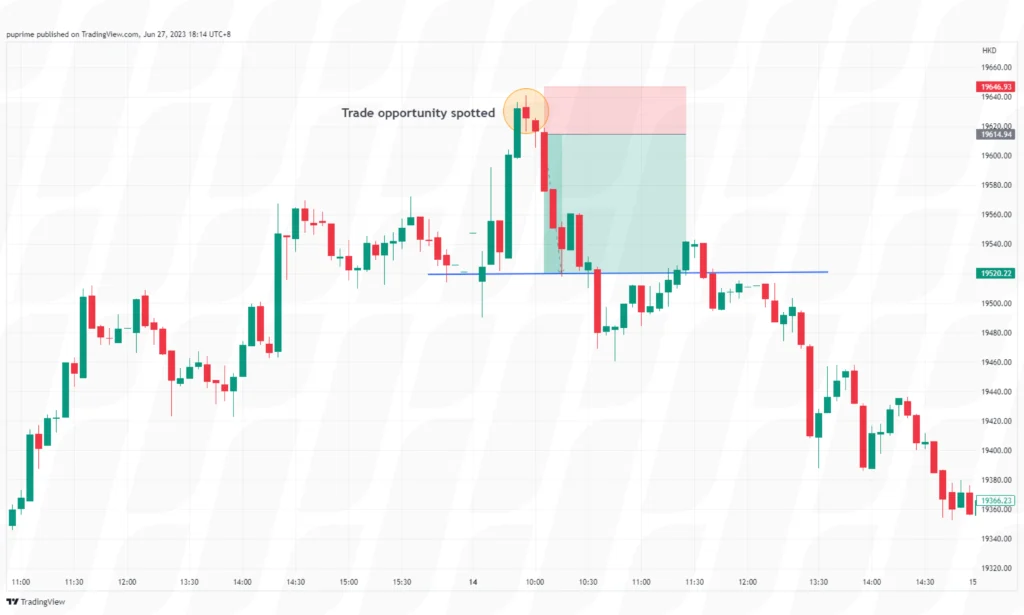

Scalping involves making multiple trades throughout the day to take advantage of small price fluctuations. In scalping, traders aim to capture quick profits by entering and exiting trades within minutes or seconds. Day traders utilise the scalping strategy as part of their overall day trading strategies to achieve their trading objectives. Here’s an explanation of how day traders use scalping to enhance their day trading strategies:
Capitalising on Short-Term Price Movements: Day traders aim to profit from smaller price fluctuations within a single trading day. By trading short-term volatility, they can take advantage of quick price movements and potentially try to accumulate profits from multiple trades throughout the day.
Maximising Trading Opportunities In A Single Day: Scalping also allows day traders to identify and exploit various intraday trading opportunities. As they execute numerous trades within a short time frame, they can target different stocks, currency pairs, or other financial instruments exhibiting short-term trends.
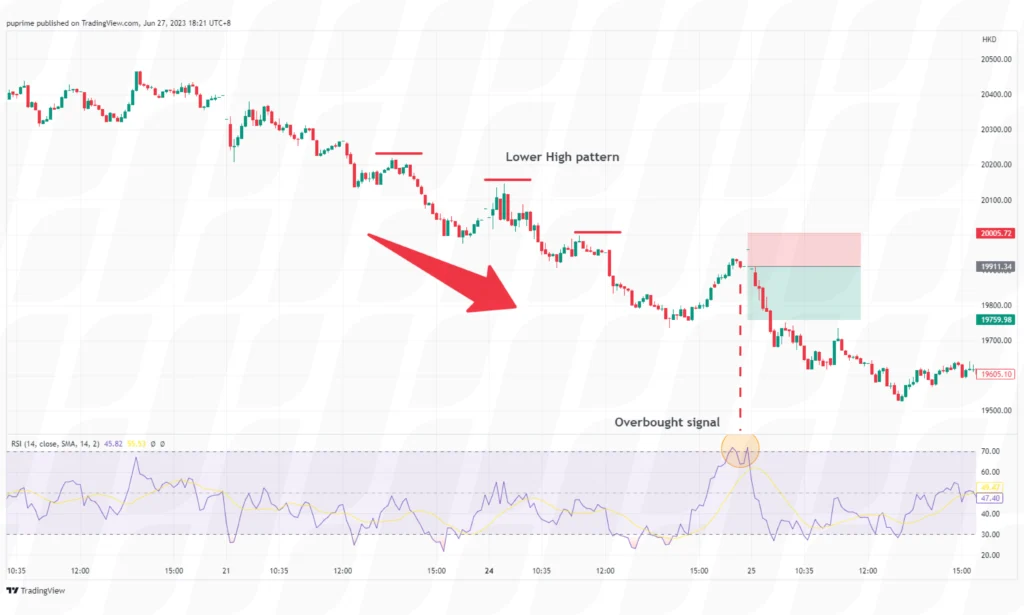

Momentum traders look for stocks or other financial instruments that are exhibiting significant price momentum in the short term. They enter positions when they detect strong upward or downward movement and aim to ride the trend for a short period. Technical indicators such as moving averages, relative strength index (RSI), and volume can assist in identifying momentum opportunities. Day traders utilise the momentum trading strategy as part of their overall day trading strategies to capture short-term price movements.
Day traders using momentum trading often focus on financial instruments that exhibit significant and sustained price movements, on shorter time frames charts. This allows traders using a day trading strategy to capture and capitalise on intraday price momentum and exit positions before the trend potentially reverses.
Once a strong price trend is identified, day traders could enter positions in the direction of the momentum. For example, if a stock is showing upward momentum, they may take long positions to profit from further price increases. Conversely, if a stock is displaying downward momentum, they may take short positions to benefit from potential price declines.


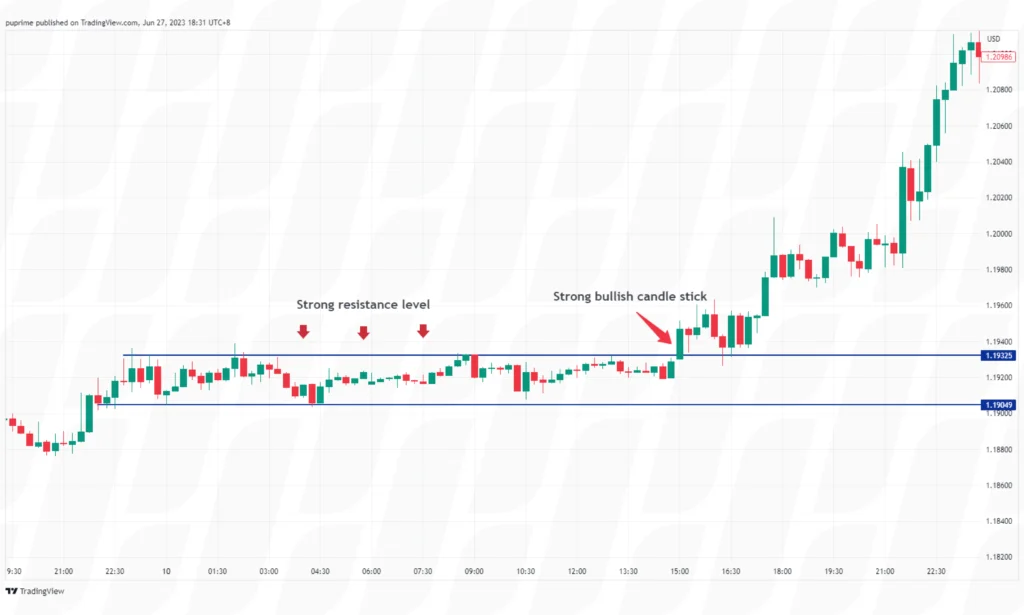

Breakout traders focus on price levels of support and resistance. They enter positions when the price breaks above resistance or below support levels, anticipating a significant price movement. Breakout trading often relies on increased volatility and trading volumes following a breakout. Day traders use breakout trading as part of their overall day trading strategies to capture potential price movements following a breakout of a significant price level. Here’s an explanation of how day traders use breakout trading to enhance their day trading strategies:
Day traders use breakout trading strategies to scan the market for stocks or other financial instruments that are approaching key levels of support or resistance in the day. These levels would be determined using technical analysis tools such as trendlines, horizontal support/resistance levels, or chart patterns like triangles or rectangles. Traders using the day trading strategy would patiently wait for a breakout to occur, which happens when the price decisively moves above resistance or below support levels.
Day traders would use breakout trading, often focusing on shorter timeframes, such as 15-minute, 30-minute or 1-hour charts, to capture intraday price movements resulting from the breakout. They would aim to exit positions before the end of the trading day to avoid potential overnight risks.


Reversal traders seek to identify turning points in the market. They look for overbought or oversold conditions and signs of a potential trend reversal. This strategy involves entering positions against the prevailing trend, anticipating a corrective move. Day traders use reversal trading as part of their overall day trading strategies to identify potential trend reversals and profit from price movements that go against the prevailing trend. Here’s an explanation of how day traders use reversal trading to enhance their day trading strategies:
Day traders could use reversal trading to look for indications that a current price trend may be nearing its end, for them to enter and exit positions in the day. They use various technical analysis tools like MACD, chart patterns, and price action to identify potential reversal signals. Once a potential reversal signal is identified, day traders wait for confirmation that comes in the form of additional price action, volume surges, or the breach of key support or resistance levels before entering a trade as it could help reduce the risk of entering premature trades and improves the probability of successful reversals.
Day traders set price targets for their reversal trades based on various factors, such as previous support or resistance levels, Fibonacci retracement levels, or projected price extensions. These targets help traders determine potential profit levels and guide their decision-making on when to exit the trade in the day.


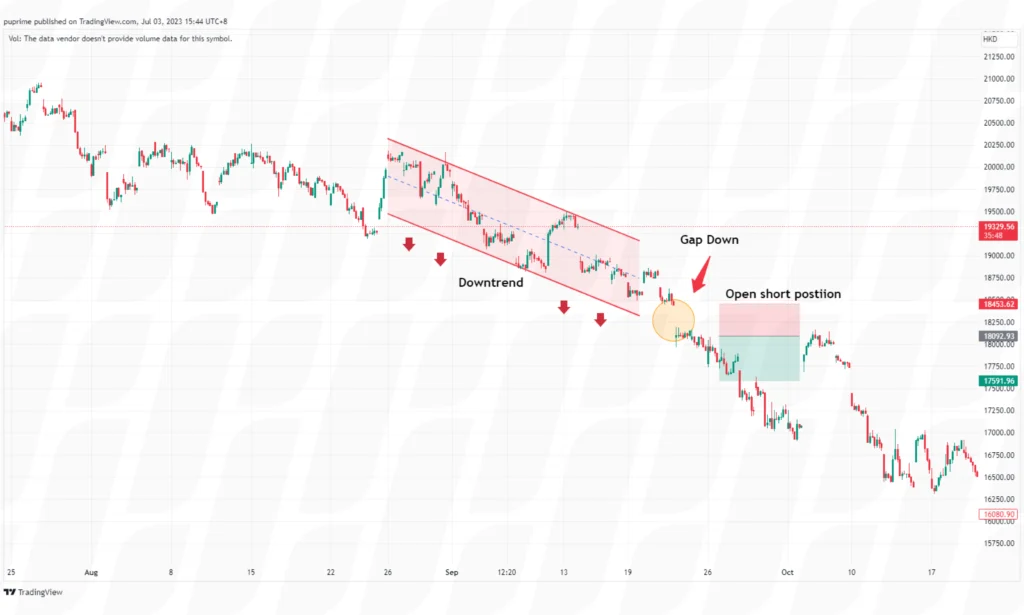

Gap trading involves taking advantage of price gaps that occur when the market opens higher or lower than the previous day’s close. Traders look for significant gaps and enter positions with the expectation that the price will fill the gap and revert to its previous levels. Day traders use gap trading as part of their day trading strategies to capitalise on price gaps that occur when the market opens. Here’s an explanation of how day traders use gap trading to enhance their trading strategies:
Price gaps occur when there is a significant difference between the closing price of the previous trading session and the opening price of the current session. Gaps can be categorised into three types:
Upward Gap: Occurs when the opening price is higher than the previous closing price.
Downward Gap: Occurs when the opening price is lower than the previous closing price.
Sideways Gap: Occurs when the opening price remains within the range of the previous closing price.
Day traders focus on identifying and analysing gaps that occur at the market open. They look for gaps that have the potential for significant price movement and volatility, as these offer opportunities for quick profits. Day traders can employ several gap trading rules when trading gaps, depending on the type of gap and market conditions, like the following:
If a stock is experiencing a gap up in an uptrend, it signals a good opportunity to buy and hold a long position.
However, a stock is experiencing a gap down in an uptrend, it signals a good opportunity to short sell the stock instead.
On the other hand, if a stock is experiencing a gap up in a downtrend, it signals a good opportunity to short sell the stock.
Lastly, if a stock is experiencing a gap down in a downtrend, it signals a good opportunity to buy and hold a long position for the stock.
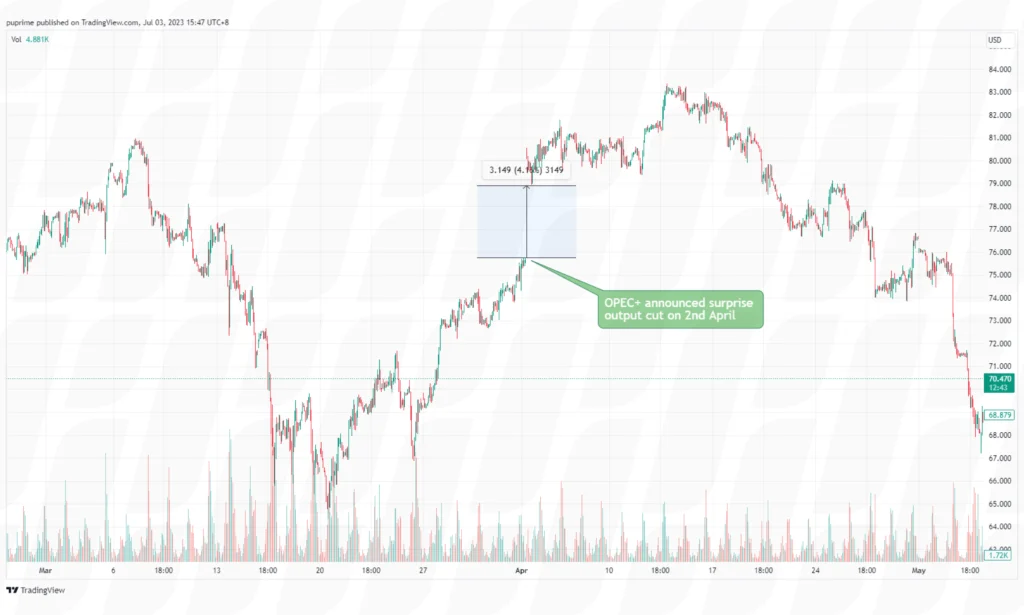

News traders capitalise on significant news announcements and their impact on the market. They closely monitor economic indicators, earnings reports, and geopolitical news to identify trading opportunities. News traders aim to enter positions quickly after news releases, as volatility and price movements can be heightened during these periods. Day traders use news trading as part of their day trading strategies to take advantage of significant market movements triggered by news events. Here’s an explanation of how day traders use news trading to enhance their trading strategies:
Day traders focus on news events that are likely to have a significant impact on specific stocks, sectors, or the overall market. They prioritise news that has the potential to create volatility and generate trading opportunities. For example, an earnings report that surpasses market expectations can trigger a sharp price movement in a specific stock. When a relevant news event occurs, day traders would analyse the impact of the news release on the market and make trading decisions accordingly. This can involve entering positions, adjusting existing positions, or exiting trades, depending on their assessment of the news’s impact.
Day traders using news trading often focus on shorter timeframes, such as 1-minute, 5-minute, or 15-minute charts. This allows them to capture the initial price reaction to the news event and potentially capitalise on short-term volatility for their day trading strategies.
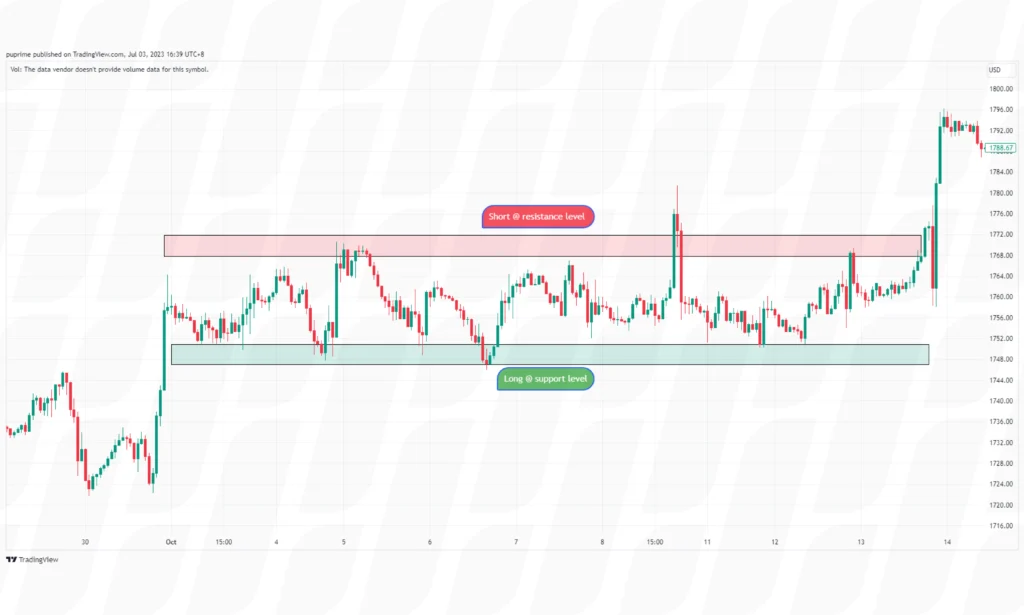

Last but not least, the range trading strategies involve identifying price ranges in which a security or asset is trading and aim to profit from repeated price reversals within that range. They enter long positions near support levels and short positions near resistance levels, expecting the price to reverse once it reaches the opposite boundary of the range. Day traders use range trading as part of their day trading strategies to profit from price movements within a defined range. Here’s an explanation of how day traders use range trading to enhance their trading strategies:
Day traders using range trading strategies look for periods when the price of a financial instrument is trading within a relatively well-defined range. They analyse price charts and technical indicators to identify the upper and lower boundaries that contain the price action. Day traders then mark key support and resistance levels that define the range. Once the range is identified, day traders look to enter trades near the range boundaries. They enter long positions near support levels, anticipating a bounce higher, and enter short positions near resistance levels, anticipating a move lower. They aim to capture profits as the price oscillates within the range.
Day traders aim to capture profits by selling near the upper boundary of the range when short, or buying near the lower boundary when long. They may also consider taking partial profits as the price approaches the opposite boundary of the range. The exit points are based on the expectation that the price will reverse or stall near these levels.
In addition, analysing trading volume can also provide additional insights into range trading. Day traders may look for higher volume near the range boundaries, indicating increased market participation and potentially signalling a breakout or a reversal.


Day trading strategies, which involve buying and selling financial instruments within the same trading day, can offer certain advantages and face limitations. Here are some commonly observed advantages and limitations of day trading strategies:
Potential for Quick Profits: Day trading strategies aim to capitalise on short-term price movements, providing opportunities for quick profits if executed successfully.
High Liquidity: Traders exercise day trading strategies often focus on highly liquid markets, such as stocks, currencies, or futures, which offer ample trading volume. This liquidity allows for easy entry and exit from positions, reducing the risk of slippage.
Reduced Overnight Risk: By closing all positions before the end of the trading day, traders using day trading strategies can eliminate exposure to overnight market risks, such as unexpected news or events that could impact prices negatively.
Increased Market Awareness: Day traders typically engage in extensive market analysis and monitoring, which can enhance their understanding of market dynamics, trends, and patterns.
Time and Effort Demands: Day trading requires significant time and attention throughout the trading day. Traders must constantly monitor market conditions, execute trades, and analyse data, making it a demanding and potentially stressful activity.
Emotional and Psychological Challenges: Day trading can be emotionally challenging, as traders face the pressure of making split-second decisions and dealing with potential losses. Emotions like fear and greed can lead to impulsive or irrational trading decisions.
Increased Risk of Losses: The short-term nature of day trading strategies exposes beginner day traders to increased volatility and market noise, making it harder to accurately predict price movements. Inexperienced or ill-prepared traders may face significant losses due to rapid market fluctuations. However, these traders could read more resources on trading knowledge or gain trading experiences with a demo trading account before jumping into trading directly, with day trading strategies.


Day trading strategies offer the potential for quick profits and exciting opportunities in the financial markets. However, the fast-paced nature of day trading comes with inherent risks that require careful consideration and effective risk management. For day trading strategies to reap successful outcomes, one needs to understand and implement risk management in day trading to protect their capital and maximise their chances of long-term profitability.
Setting Stop Loss Orders: A crucial aspect of day trading is protecting against excessive losses. Setting stop loss orders helps limit downside risk by automatically closing a position when a predetermined price level is reached.
Proper Position Sizing: Day traders should determine the appropriate position size based on their risk tolerance and the specific trade setup. By adhering to a consistent position sizing methodology, traders can manage risk effectively and avoid overexposure.
Risk-Reward Ratio: Evaluating the potential reward relative to the risk undertaken is essential. Day traders should aim for trades with a favourable risk-reward ratio, ensuring that potential gains outweigh potential losses.


In conclusion, day trading strategies for beginners can be a highly lucrative but demanding endeavour in the financial markets. While they offer the potential for quick profits and excitement, day traders must also navigate numerous challenges and risks. Successful outcomes from day trading strategies require a combination of skill, knowledge, discipline, and effective risk management strategies. It is crucial to approach day trading with a realistic mindset, recognizing that losses are an inevitable part of the journey.


Trade forex, indices, metal, and more at industry-low spreads and lightning-fast execution.
Sign up for a PU Prime Live Account with our hassle-free process.
Effortlessly fund your account with a wide range of channels and accepted currencies.
Access hundreds of instruments under market-leading trading conditions.